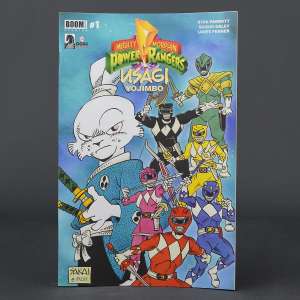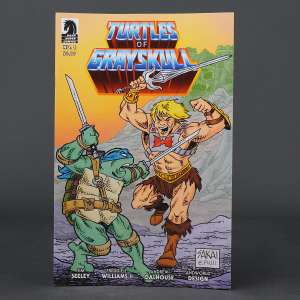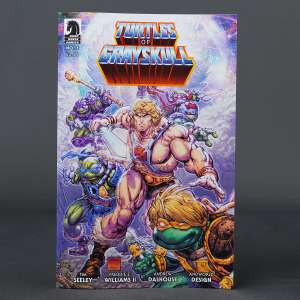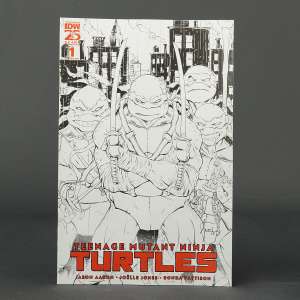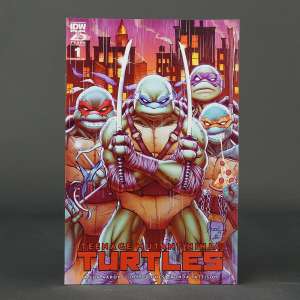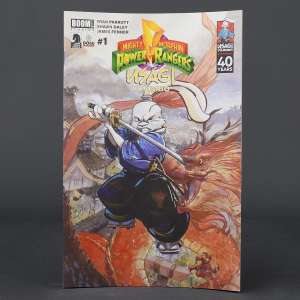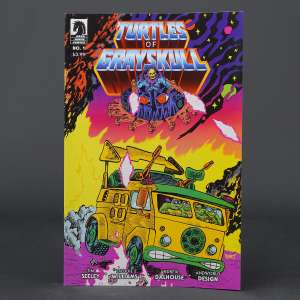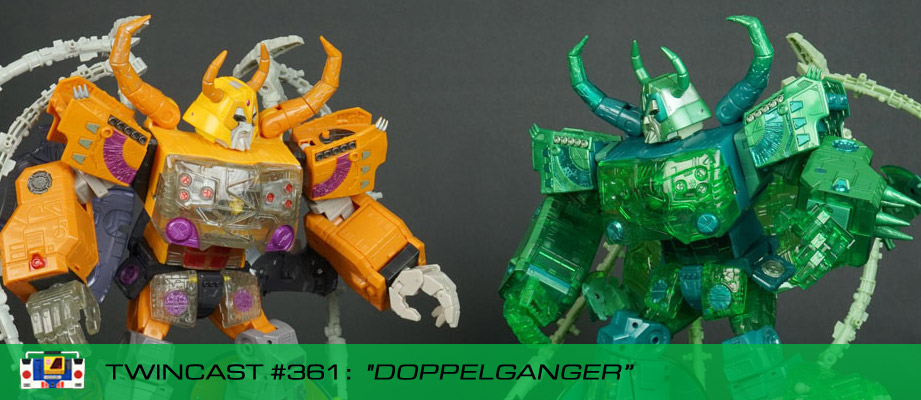Courtesy of boobytrap from Macross forums
Old story but relevant as it gives you an insight in the JP figure/toy creation process. I kind of recall reading the same thing when MP Ultra magnus was created. The suits upstairs call the shots with regards to the costs so we fans don't always get what we want!
https://www.forbes.com/sites/olliebarde ... 48b4b6e974By Ollie Barder
http://www.forbes.com/sites/olliebarder/"Recently I was lucky enough to visit the offices of a Japanese toy company called Arcadia. There I met with one of the main members of the company’s development section, Yoshiya Kanke, as well as a director from the toy design studio T-Rex, Hiroyuki Motoki.
Arcadia is known for its very good Macross toys, from the excellent variable fighters they make to even huge transforming battleships such as the SDF-1 Macross.
However, while I have spoken with members of T-Rex in the past I was curious how these two companies work together to bring such fantastic toys to the world.
What with an all-new Garland toy from the first Megazone 23 on the way, it now seemed a good time to find out more about Arcadia as a whole.
Thankfully, Kanke was happy to explain the company’s origins and in part how that tied into a previously toy company called Yamato.
“To explain where Arcadia came from, I need to talk about its previous existence. We already had a hobby manufacturing company called Yamato. However, around ten years or so ago a group of people from Yamato decided to leave and make a new company. Trying to do something new. I was one of them and we set up an office in Akihabara. The core of that company was to plan new toys, so this small group of us started to do just that. The aim was that we wanted to make things we liked. So that's how we started out as Arcadia.
“The new things we wanted to do was work with new characters but more than anything else, we wanted to reduce the number of restrictions we had while working at Yamato. Such as financial restrictions on how funds should be allocated to each project. Or even the relationship we had with other departments. So we had all these restrictions that would ultimately hinder the quality of the end product. We just wanted to remove these restrictions once and for all, restart all of this in a new organization.
“As for why Yamato disappeared, I wouldn't know about that. The reason could be anything, it could have been because all the planners had left but I don't really know.”
Moving on, we talked about why Arcadia has such a continued and strong interest in making toys from various Macross series.
“During my time at Yamato, I was behind all the planning for the various Macross toys they did. The reason I got involved with that company is that I really wanted to make those kinds of Macross toys. However, that desire has not changed even though I now work at a different company. So I wanted to make Macross toys in one way or another. As such, I went to approach the Macross copyright holder and made a request to make new toys. Obviously, what happened between the other copyright holders I do not know but they ended up bringing the project to me. So I still want to make Macross toys and I am lucky enough to be able to do just that.
“With our Macross toys, the way it starts is by planning out the drawings for each new toy. Once these initial schematics are done, these are then shown to the copyright holder and Mr. Shoji Kawamori. Especially when it is mecha related, Mr. Kawamori would obviously look at this stage. Normally, he will make comments here and give feedback. So we often get the requests back on what needs to change and how the toy should be. Admittedly, this is now the normal process works but it is not as though you are working side-by-side making all this happen. It is more that someone such as Mr. Kawamori gets involved in terms of the overall supervision. So in that sense, it is as per the normal production process for toys.”
At this point, Motoki interjected and gave his viewpoint on working on various Macross toys over the years.
“For me, I have been involved in these kinds of Macross toys for around 15 years. What I have learned is that what we need to do is not just copy the design from the anime. Instead, we have to take into consideration what Mr. Kawamori's original intentions with the design were. This is because there are certain limitations in how his designs are translated into anime. So we have to go back and think what Mr. Kawamori originally intended the design to be. That then becomes the basis for our toy design process. At one point, we had a comment from Mr. Kawamori that our design for the VF-0D toy looked truer than what he had in mind with the anime. So that was a real compliment to have from him. We always pay attention to this kind of process and after 15 years there is a general sense of trust that we will not mess anything up and that's great for us.”
While I had a good breakdown of the toy production process from the standpoint of a design studio such as T-Rex in a previous interview, I wanted to know more how it worked from the standpoint of a toy company such as Arcadia. Again, Kanke was very forthcoming on how it all works.
“At first, we have to identify what we really want to make into a toy. Once that is clear, we will decide what size and specification that toy might be. At this point, we contact the copyright holder and check whether it is okay for us to make a toy of this design. Once we get permission from the copyright holder and they give us their own requirements, we then put in an order to a design studio such as T-Rex for example. Then T-Rex does all the planning as well as the engineering design.
“Once the schematics are done, we go back and seek supervision and progress approval from the copyright holder. We then get comments and more feedback at this point. This then starts our first round of modifications, after that, we try to prototype the toy itself. This prototype is then sent to the copyright holder, with further supervision and approval as well as other such comments. Again, we often get requests for further modifications and then another prototype is made. So this happens a few more times and then we get to the final approval stage.”
“Once the approval is granted the toy then goes to the factory for manufacturing.
“It's also worth noting that while we are doing the prototype feedback we also working on the paint finish and overall coloring approvals. So this is a simultaneous process.
“So this means once all the coloring is completed we will create an information package, so the engineering schematics and all the coloring, and we send that on to the factory.
“At the factory, they make the moulds; with the first test being a plastic only version of the toy to make sure it is going to work. After that, there is a bit of trial and error with the factory, so that means redoing the moulds and general fine-tuning. Again, we send these test versions to the copyright holder for feedback. This whole process also takes several attempts.
“Finally, with all this done we will start to take orders and once we know how many toys we need to make we then start the final manufacturing process.”
There are many toy companies in Japan and I wondered if that affected how Kanke approached his work at Arcadia. After all, there are massive companies like Bandai out there and that must make for a quite daunting opponent in terms of competition. However, Kanke was not really fazed by all that.
“When it comes to our competition, I am not really bothered by what surrounds us too much. As long as the whole process is fun, then let's keep on doing that. For me, as long as I can keep having fun with making toys, then that is all that matters to me.”
“So for instance, I am interested in doing some of the rarer variable fighters from Macross, such as the VF-9 Cutlass. Not to mention on developing Macross toys that have not been seen before is also something I would like to do.”
“As for other non-Macross series, personally, I want to do the ships from Legend of the Galactic Heroes but the boss of Arcadia said no to this. Back in the day, there were many different series I wanted to work on when it came to toys but these days I feel that I really satisfied with focusing on series like Macross. Mainly because many of my toy making desires have been met with that series.”
It is here we moved onto the new Garland toy from Megazone 23 and the process of how that came about. Considering that Yamato did a toy of this design over ten years ago now, it seems that this new version is something close to Kanke’s heart.
“The original Yamato Garland toys were 1/15 scale, but this one is a bit smaller at 1/24 scale. One of the main reasons for this is that over the years, the materials and people costs have increased. So if we kept the old scale the toy would be far more expensive to make. However, in those days when Yamato was making toys, there was not really any differentiation between children's toys and what we would now call hobby toys. What I mean by the latter are toys adults collect and play with, these days though there is a very clear type of categorization.
“Around 12 or 13 years ago, Yamato's version of the Garland was made as a general toy. From the technical point of view, such as schematics and engineering, they were all different. Whereas now it is far more improved, more specific. In that, you can realize the design in far more detail than you were able to previously. Even if the size is smaller, what you can do with that toy is far in advance of what was possible when the original Yamato Garland was made.
“So even though this new Garland is smaller, its spec is far higher in terms of detailing and articulation. It also looks a lot more accurate to the original design, which makes it pretty cool, and you can play with it more freely. In addition, compared to the original toy this new Garland is fully painted and that really helps with the overall detailing.
“The other big intention with this new Garland toy was for it to be the start of a series of Megazone 23 related toys. This meant collectability would need to be a big part of its overall design. The smaller size is also part of this, as it makes collecting more attractive as it is less bulky.”
It really seems that this new line of Megazone 23 toys could be quite comprehensive, as Kanke explains.
“To give you an idea of what we are planning, we also want to do the Hargun and its transporter from the first Megazone 23. We also already have a prototype for the Proto Garland toy from Megazone 23 Part II. When it comes to doing toys from Megazone 23 Part III, there maybe one or more but we shall have to see how this first Garland toy does. I hope that if everything goes well we can also do the mecha from Megazone 23 Part III.
“So if this series of Megazone 23 toys continues to sell, then we might even look into making the Original Garland as shown in Megazone 23 Part III but that really depends on how the earlier toys do.
“Currently, we are only looking up to the Hargun in terms of the engineering and design planning. That means we are trying to realize the toy as it is set out in the original anime. In that, the Hargun comes in two parts; the bike and the legs that combine with it. So this is why we are doing the transporter, as that's where the leg parts are stored.”
Considering the amount of effort Arcadia are putting into this new Garland, it came as a surprise to them that another toy company is also making a Garland toy of its own.
“At the time we started on this Garland project, we had no idea another company was planning to do one of their own. So we have just got on with our version in the time since and everyone already seems to think that our version is way cooler as well as more accurate to the original design.
“Our version is also supervised by the original mecha designer of the Garland, Mr. Shinji Aramaki. In terms of feedback from Mr. Aramaki on our toy, he said that he thought the toy was really close to how he designed the Garland at the time of the first Megazone 23. In addition, when Mr. Aramaki designed the Garland he didn't do it in such a way that meant it would seamlessly transform but our toy does, so that was again a job well done from his point of view. What's more, when it comes to the overall playability, you can transform our new Garland toy with relatively few steps and it is quite strong in terms of the mechanisms that facilitate that. This was something that Mr. Aramaki was especially happy with.”
From playing with this new Garland toy, I can see why Mr. Aramaki would be happy with it. While it is indeed a bit smaller than the older Yamato versions, it is much better in terms of overall sculpt, detailing and articulation. There is also a surprisingly large amount of diecast metal in the toy and that not only makes it feel quite weighty but also reinforces its transformation setup. The latter is noteworthy, as the old Yamato toys of the Garland were very fragile and had a habit of breaking during transformation.
As we finished up, I wanted to know what plans Arcadia had for the future in terms of upcoming toys and it seems that we have a lot to look forward to.
“In terms of our next big release, probably the Proto Garland from Megazone 23 Part II next year, I think that will be before the Hargun. Then after that an all-new SV-51 toy from Macross Zero.”
“Even though we are re-releasing the movie version of the SDF-1 Macross, we do want to do the TV series version as well but that is still undergoing approval from the copyright holder. Personally, I really want to do it.
“When it comes to Macross Plus, I would also really like to do a new YF-21 to accompany our new YF-19 toy. However, when it comes to the VF-11B, if there is an opportunity I would also like to do that too but whether I can convince our company to do that would be another thing. Even though I am in charge of planning, I still need to ask our managing director on green lighting new toys.
“If we want to do new toys it means we have to invest in new moulds and that is expensive. While we can re-release older toys, if people want new versions then that is driven by sales. That's a key thing here.”
The Garland toy from Megazone 23 is released this December for 25,800 yen. You can pre-order it from online retailers such as HobbyLink Japan.


